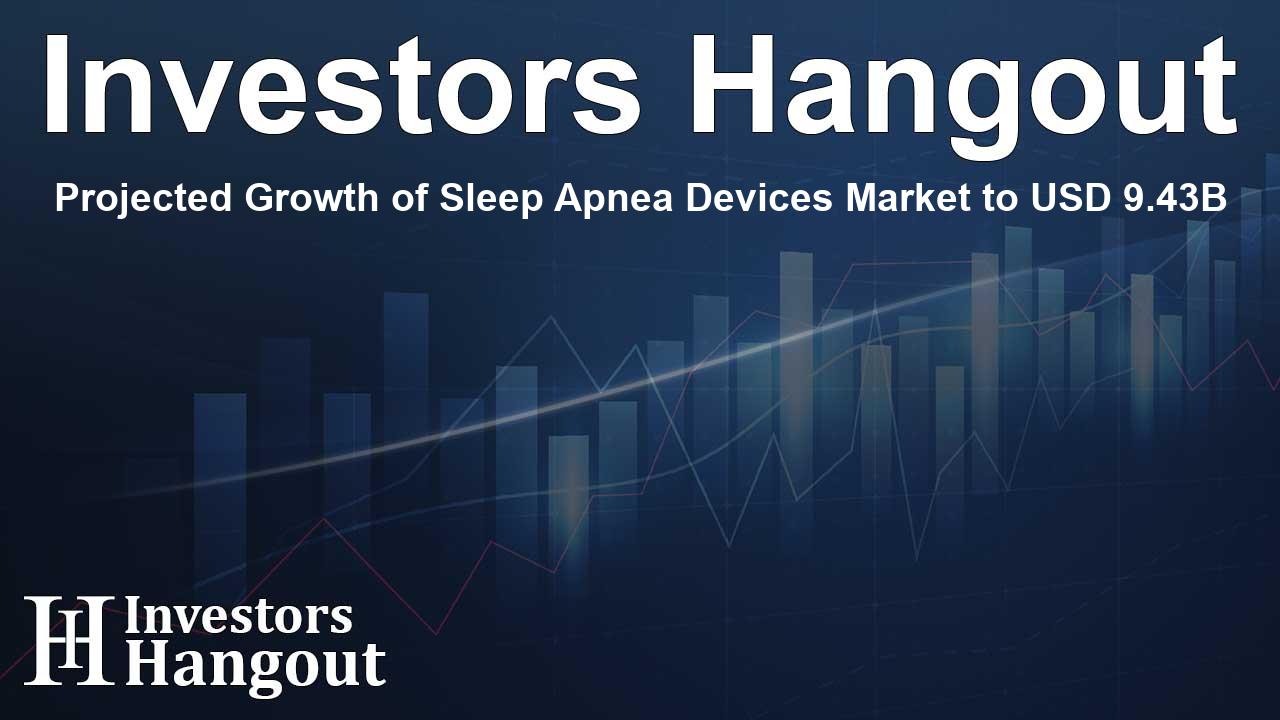Projected Growth of Sleep Apnea Devices Market to USD 9.43B

Overview of the Sleep Apnea Devices Market
The sleep apnea devices market is on a remarkable growth trajectory, with estimates projecting a rise from USD 5.25 billion in recent years to USD 9.43 billion by 2032. This increase represents a compound annual growth rate (CAGR) of 6.74%, reflecting widespread adoption and innovation within the industry.
Factors Driving Market Growth
The prevalence of sleep apnea, especially obstructive sleep apnea (OSA), serves as a crucial driver of market expansion. The World Health Organization (WHO) indicates that approximately 100 million individuals suffer from sleep apnea globally, highlighting the significant need for effective treatment options. The aging population, coupled with lifestyle ailments including obesity, contributes further to this growing market.
Technological Innovations in Treatment
Recent advancements in sleep apnea treatment technology are revolutionizing the market. Various innovative devices, such as smart continuous positive airway pressure (CPAP) machines, automated positive airway pressure systems, and user-friendly wearable sleep monitors, have been developed. These innovations enhance accessibility and effectiveness for patients, making treatment options more appealing.
The Need for Awareness and Diagnosis
There is an increasing focus on raising awareness about sleep disorders, which is pivotal in driving demand for sleep apnea devices. Government initiatives and healthcare campaigns are critical in educating the public about the risks associated with untreated sleep apnea, which include hypertension, cardiovascular disease, and diabetes. Such information encourages individuals to seek early diagnosis and treatment, propelling market growth.
Major Players in the Sleep Apnea Devices Market
Key players in the global market include major companies like ResMed and Philips, whose products are setting new standards in patient care. Emerging companies in the market are also contributing significantly, introducing a variety of therapeutic and diagnostic devices to cater to diverse patient needs.
Market Segment Overview
The sleep apnea devices market can be categorized into several segments, primarily focusing on products used for both therapeutic and diagnostic purposes. The therapeutic devices segment dominates the market, accounting for a significant revenue share, primarily due to the effectiveness of CPAP and BiPAP machines, as well as oral appliances.
Age Demographics Impacting Market Trends
Within the market, the age group of 40 to 60 years is particularly significant, generating about 55% of the total revenue. This age demographic often faces higher risks for sleep apnea due to lifestyle factors and related health conditions, increasing the demand for appropriate diagnostic and therapeutic solutions.
Regional Market Insights
Geographically, North America leads the market, holding a substantial share due to advanced healthcare spending practices and a robust awareness ecosystem regarding sleep apnea. The United States plays a pivotal role in driving market growth, primarily influenced by improved access to innovative CPAP and BiPAP therapies.
European and Asian Markets
Europe also showcases significant market action, particularly in countries like Germany and the UK, characterized by rising treatment awareness and healthcare advancements. Meanwhile, the Asia-Pacific region exhibits the fastest growth, with increasing healthcare investments and awareness promoting the adoption of sleep apnea devices in markets such as India and China.
Future Outlook and Developments
As the market evolves, innovations will continue to play a crucial role. For instance, ResMed's recent release of the AirSense 11 CPAP device aims to enhance patient experience through advanced pressure delivery algorithms. Similarly, Philips' DreamStation 2 reflects the trend toward personalized therapy solutions that fortify patient compliance.
Frequently Asked Questions
What factors are driving the growth of the sleep apnea devices market?
The growth is primarily driven by the increasing prevalence of sleep apnea, advancements in technology, and rising awareness of sleep disorders.
Who are the major players in the sleep apnea devices market?
Key players include ResMed, Philips, Fisher & Paykel Healthcare, and others, each contributing significantly to market innovation.
Which demographic is most affected by sleep apnea?
The age group of 40-60 years is significantly affected, accounting for a large portion of the market due to associated lifestyle factors and health conditions.
How are technological innovations influencing the market?
Technological innovations, like smart CPAP machines and wearable monitors, improve treatment effectiveness and patient adherence.
What regions are leading in the sleep apnea devices market?
North America leads the market, followed by Europe and the Asia-Pacific region, each showing unique growth dynamics.
About The Author
Contact Dominic Sanders privately here. Or send an email with ATTN: Dominic Sanders as the subject to contact@investorshangout.com.
About Investors Hangout
Investors Hangout is a leading online stock forum for financial discussion and learning, offering a wide range of free tools and resources. It draws in traders of all levels, who exchange market knowledge, investigate trading tactics, and keep an eye on industry developments in real time. Featuring financial articles, stock message boards, quotes, charts, company profiles, and live news updates. Through cooperative learning and a wealth of informational resources, it helps users from novices creating their first portfolios to experts honing their techniques. Join Investors Hangout today: https://investorshangout.com/
The content of this article is based on factual, publicly available information and does not represent legal, financial, or investment advice. Investors Hangout does not offer financial advice, and the author is not a licensed financial advisor. Consult a qualified advisor before making any financial or investment decisions based on this article. This article should not be considered advice to purchase, sell, or hold any securities or other investments. If any of the material provided here is inaccurate, please contact us for corrections.
